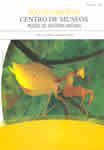Authors
Abstract
The present work is part of the Seventh Marathon of taxonomic sampling carried out by the Botanical Garden at Universidad de Caldas from December 8th to 11th 2006, in 2 woody relicts pertaining to a life zone of low tropical humid mountainous forest of the municipal rural settlement “La Cuchilla” of Marmato, Caldas, located 2,100 m.a.s.l. The worked collections were deposited in the fungus library of the Botanical Garden of the Universidad de Caldas (JBUC). For taxonomic effects, carpophores of macromycete fungi were collected during four days in 2 relicts. From the macroscospic and microscopic analyses of the fungi, the cap, hymenphore, stalk, spore deposits, spore dimensions and substrate type characteristics were determined. Altogether, 72 collections were reviewed, of which 5 species belong to the Ascomycota class, distributed in 4 genera, 3 families and 2 orders; the other 67 species are distributed in 16 orders, 26 families and 51 genera of the Basidiomycota class. The Tricholomataceae, Lycoperdaceae, Coriolaceae and Agaricaceae families presented greater amounts of genera. Of these the most common are: Auricularia, Collybia, Coprinus, Coriolus, Gymnopus, Lepiota, Lycoperdon, Marasmius, Mycena, Oudemansiella, Ramaria and Xylaria.
References
ALEXOPOULOS C. J., C.W. MIMS & M. BLACKWELL., 1996. Introductory Mycology. 4 ed. John Wyley & Sons, Inc., New York, 869 pp.
DENNIS, R.W.G. 1970. Fungus flora of Venezuela and adjacent countries, kew Bulletin, additional series III. London. 531 pp.
DOMÍNGUEZ, L. 1993. Gasteromycetes (Eumycota) del centro y oeste de la Argentina. I. Analisis critico de los caracteres taxonomicos, clave de los géneros y orden Podaxales. Darviniana, 32 (1-9): 195 – 235 pp.
FRANCO, A. E.; ALDANA, R. & HALLING, R. E., 2000. Setas de Colombia (Agaricales, Boletales y otros hongos). Colciencias, Universidad de Antioquia, Medellín, 156 pp.
FRANCO, A. E .& CALLE, E., 2000. Hongos Agaricales y Boletales de Colombia. Biota Colombiana 1 (1), 18 pp.
FRANCO A. E.; VASCO A. M.; LÓPEZ C. A. & TEUN B., 2005. Macrohongos de la Región del Medio Caquetá – Colombia. Universidad de Antioquia, Medellín, Colombia.
FORERO, E. 1999. La sistemática en Colombia para el siglo XXI. Revista de la Academia de Ciencias Exactas y Naturales. 23 (86): 129–137.
GUZMÁN G., 1987. Identificación de los hongos comestibles, venenosos y alucinantes. Ed Limusa. México.
HALLING. R. 1996. Selected Guidelins for erhnobotanical research, Cap 6. Recommendations for collecting mushrooms. The New York Batanical Garden. 135–141 pp.
HAWKSWORTH, D. L., 2002. Why study tropical Fungi? Tropical mycology, Vol. 2. pp. 1 – 11.
LARGENT, D.; JOHNSON, D. .& WATLING, R., 1977. How to identify mushrooms to genus III: Microscopic Features; Mad River Press Inc., Eureka California, 122 pp.
LARGENT, D. & BARONI, T. J., 1988. How to identify mushrooms to Genus VL: Modern Genera; Mad. River Press Inc., Eureka California, 270 pp.
MONTOYA, A. F., 2004. Identificación taxonómica de las especies del género Auricularia (Fungí-Basidiomycetes) presentes en Colombia: Tesis, Universidad de Caldas, Facultad Agronomía, Manizales.
NUNEZ, M. & RIVARDEN , L. 1995. Polyporus (Basidiomycotina) and related genera, Fungiflora, Oslo, Norway, 85 pag.
PEGLER, D., 1983. Agaric Flora of the Lesser Antilles: Royal Botanic Gardens, Kew, London. 669 pp.
PULIDO, M. M., 1983. Estudios en Agaricales Colombianos. Los hongos de Colombia IX: 143 pp. Bogotá.
RIVARDEN, L. 1991. Genera of Polypores, nomenclatura and taxonomy, Fungiflora, Oslo Norway, 363 pp.
VELÁSQUEZ V. L., 1998. Hongos de Antioquia. Ed. Universidad de Antioquia, Medellín., Colombia.
ZALAMEA, B. M., 2002. Guía para recolectar hongos macromicetos del orden Aphyllophorales. Pérez – Arbelaezia, 13: 115 -131.

 PDF (Español)
PDF (Español)
 FLIP
FLIP


















